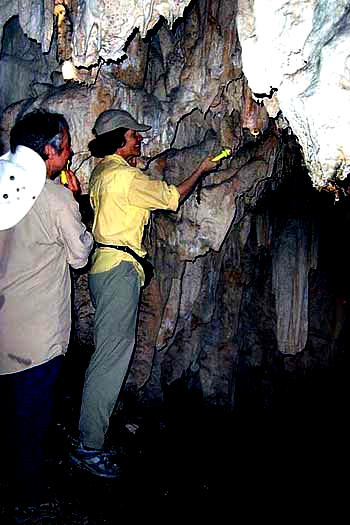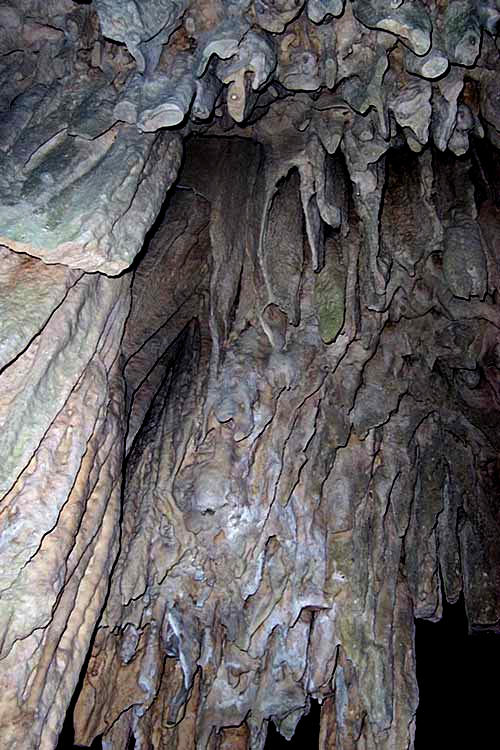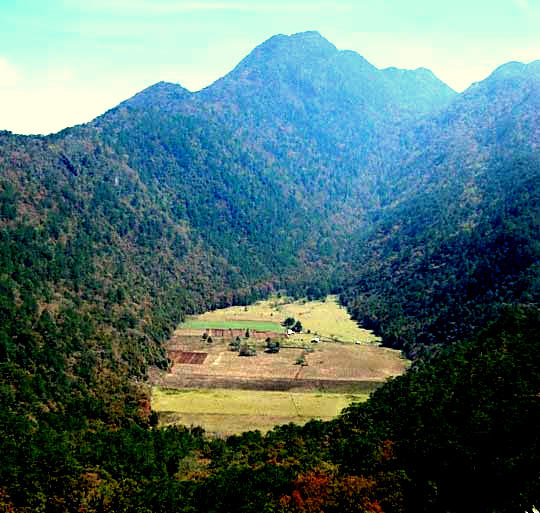Excerpts from Jim Conrad's
Naturalist Newsletter
from the March 10, 2007 Newsletter issued from Sierra Gorda Biosphere Reserve, QUERÉTARO, MÉXICO
STALACTITES, SPELEOTHEMS & MORE

Our main destination that day was a cave near the top of a limestone ridge not far from town. It was a typical cave with stalactites, stalagmites and other such features. Since it seemed to plunge downward more than to continue horizontally and we weren't really equipped for serious exploration, we didn't range far from the entrance. Still, it was good seeing the formations, despite many of them having been destroyed by past visitors. That's a typical view above.
Another view directed toward the cave's ceiling, showing almost-wavy formations known as speleothems -- and a lot of snapped-off stalactites -- can be viewed below.

Actually, that fancy word "speleothem" is a vague one, almost like calling something a "thing." A speleothem is "a secondary mineral deposit formed in caves, most commonly calcite." In other words, just about any solid cave deposition, including stalactites, curtains (wavy or folded sheets hanging from the roof or wall of a cave) and the half-formed curtains in the above picture are "speleothems."
Some people have problems remembering which is which with regard to stalagmites and stalactites. Just note the middle g in stalagmites, which reminds us of "the ground" from which stalagmites arise, and the middle c in stalactites, which might as well mean "ceiling," from which stalactites hang.
Though caves and sinkholes are abundant in this area, they're fairly typical of the karst topography that develops anyplace where limestone is the bedrock -- which usually is the case here in the Eastern Sierra Madres. One feature that still amazes me, however, is the "hoya," which is a level plain completely surrounded by mountains. You can't get out of an hoya without climbing upslope. From atop a cliff along our trail to the cave we had a good view of a beautiful little hoya, which you can see below:

If you look at that picture, notice the brown splotches on the otherwise green, pine-and-oak-clad slopes. The brownness is from dead and dying pine trees. It's the bark-beetle infestation I told you about in last year's December 29th Newsletter. All during our stay men were chainsawing pines to salvage the wood. You may remember the bark-beetle markings on the debarked trunks I showed you at www.backyardnature.net/n/06/061229bb.jpg.